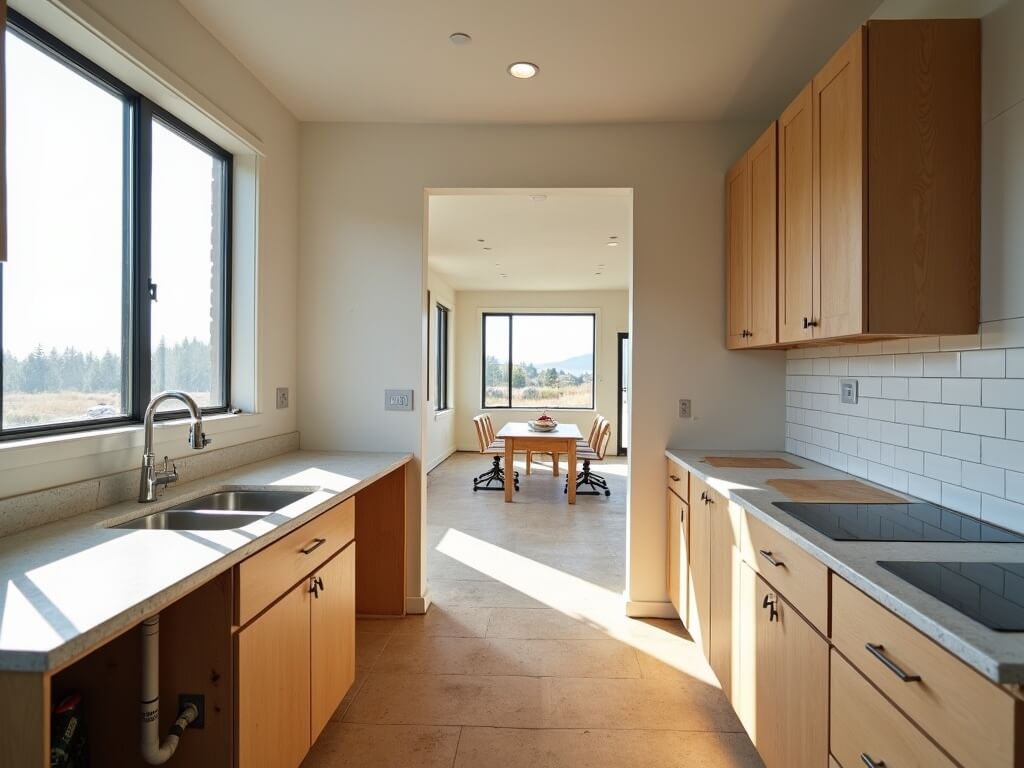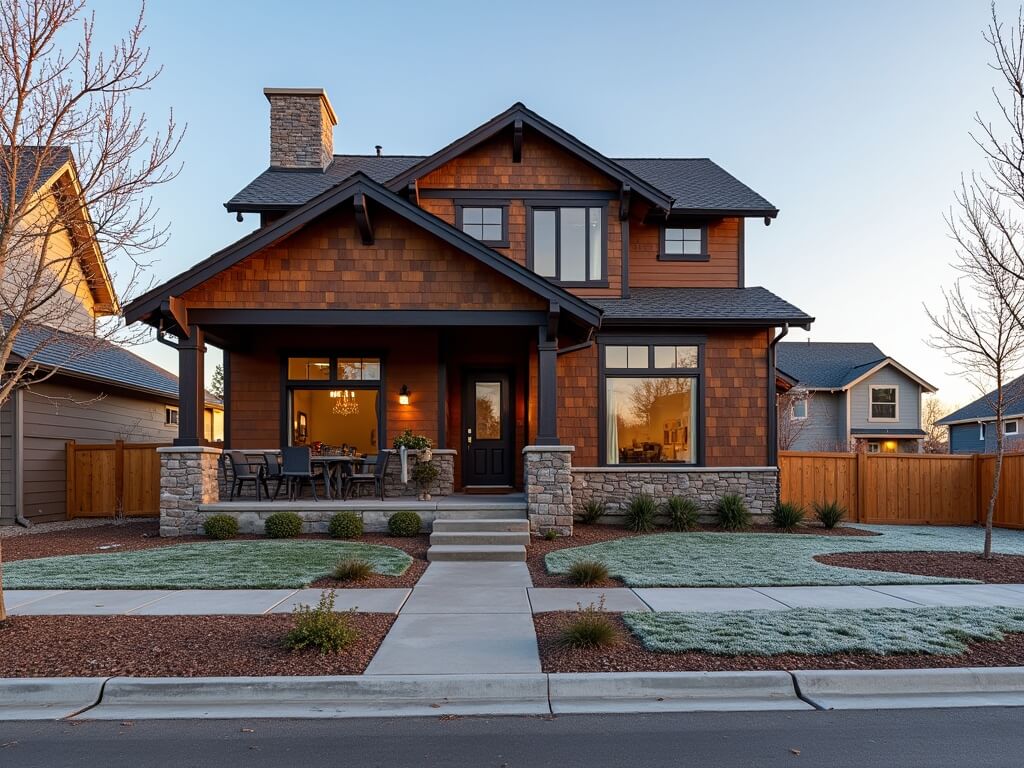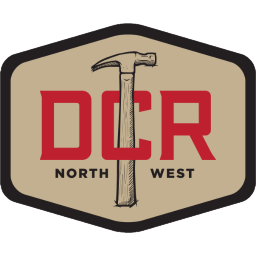Ultimate Guide to Whole-Home Renovation: Multi-Room Project Planning in NW Crossing
Planning a whole-home renovation in NW Crossing? This guide breaks down everything homeowners need to know—from smart project phasing and local permitting tips to climate-ready upgrades and long-term value strategies—helping you transform your space efficiently, beautifully, and without costly missteps.

Thinking about a whole-home renovation in NW Crossing but not sure where to start?
You’re not alone.
Most clients I talk to ask the same things:
How long will the remodel take?
Should we gut the entire home or do it one room at a time?
How do we keep it all within budget while still getting the design we want?
Let’s break it down the way I would if we were catching up over coffee—straightforward, honest, and based on years of seeing these projects through from blueprint to finishing touches.
Welcome to Your New Home—Without Moving
When people hear “whole-home renovation,” they sometimes picture a wrecking ball tearing into the walls.
That’s not (usually) what happens.
Think of whole-home renovation as reviving your home so it finally works for the way you live now—not how someone lived 25 years ago. It includes changing floorplans, upgrading bathrooms and kitchens, improving insulation, updating windows, redoing HVAC systems, and injecting new life into every inch.
It’s not just about upgrades. You’re building in comfort, energy savings, and resale value—especially valuable in desirable neighborhoods like NW Crossing.
This process is big.
It’s also worth it.
But only if you plan it right. Let’s talk about how.

How to Avoid Chaos with Smart Multi-Room Project Planning
“If we’re remodeling everything, do we need to do it all at once, or in phases?”
That decision alone can save—or cost—you thousands.
Here’s what works when planning a multi-room home renovation:
Start with high-use areas
Kitchens and bathrooms are the MVPs of most homes. Tackling those first—not only boosts daily comfort, but they’re also the most complex (plumbing, tile work, custom cabinetry). Getting them done early avoids holding up the rest of the process.
Address structural and system updates early
If your home is due for electrical upgrades, HVAC replacement, or insulation work, get that done upfront. You don’t want to finish your drywall and paint just to tear it all open again six months later for ductwork.
Layer your planning by priorities:
- Must-Haves: safety upgrades, layout changes, resolving known issues
- Lifestyle Wins: adding a DADU, home office, or refacing your fireplace
- Future-Proofing: aging-in-place features, energy-efficient upgrades
Coordinate design themes across the entire house
Even if you’re renovating in phases, deciding on a unified design style upfront is key. Picking one clear aesthetic means that whether you finish phase one next month or phase three in two years, your home will still feel like one cohesive space.
Use a Renovation Binder or Shared Digital Board
I once had a client in NW Crossing who created a Google Drive folder with every material selection, paint code, and mood board. She shared it with us and her designer. Two years later, when she was ready to start phase two, we had every detail logged and matched the original renovation seamlessly.
If you’re planning to spread your renovation over time, that’s a winning move.
Key takeaway:
A renovation without a plan is just running in circles with a sledgehammer. Define a sequence, prioritize smartly, and commit to consistency.
Should You Renovate One Room at a Time or Knock It All Out?
This decision really comes down to one question: Is your lifestyle flexible enough for a temporary life shift?
Room-by-room is how most people naturally think about remodeling.
It’s what I call the “slice approach.” Here’s why it works:
- Keeps things affordable—pay per phase, not one massive lump sum
- Less disruption—you can live in other areas during the work
- Lets you adapt on the fly—maybe you love your new kitchen so much you rethink your bathroom plans
But whole-house remodeling has its own payoffs:
- One timeline, one crew, one permit process
- One big leap in property value and energy efficiency
- No design inconsistencies—everything flows
From a contractor's view?
Doing it all at once is more efficient. You're not constantly resetting job sites, calling in trades, or submitting permits in phases.
But here’s the flip side—it’s intense.
Dust. Noise. Decisions flying a mile a minute.
Sometimes, clients need to move out for weeks or months.
If you’ve got kids, pets, or work from home, that’s something to think through seriously.
Bulletproof Tip:
If you’re doing an all-at-once remodel and can’t afford a full secondary rental property, consider an ADU or DADU build on the property first. Use it as temporary housing during the renovation—then create rental income later. We’ve done it more than once in NW Crossing, and it can actually finance a chunk of the upgrade.
Bottom line:
One-at-a-time gives you flexibility.
All-at-once gives you cohesion and efficiency.
Pick based on your tolerance for disruption, not just your wallet.

What Makes NW Crossing Renovations Unique? Pay Attention to This First
NW Crossing isn’t your average neighborhood—it’s kind of a unicorn in Central Oregon. There’s deep community pride, walkability, and architectural character you’ll want to respect, not bulldoze.
Before you repaint your home in that “on-trend” charcoal color or toss up a modern glass garage, check the zoning and HOA regulations. You’ll need a local contractor familiar with the neighborhood’s quirks and rules.
(That’s one benefit of working with a team like ours—we’ve navigated the permits, ADU guidelines, and historic integration challenges dozens of times here.)
And Central Oregon? It’s not LA.
Our freeze-thaw cycles and sunny-dry climate can destroy the wrong materials. Your window selection, siding, paint types—even roofing adhesives—should be chosen with Bend’s high desert climate in mind.
Why this matters:
- Wood siding that isn’t properly sealed here? Invite for rot
- HVAC systems without humidity control? Hello crackling joints and dust storms
- Pipe insulation ignoring winter temps? Risk for freezing and bursting
Learning that the hard way is not fun.
Key takeaway:
Build for our climate, with a crew who knows the terrain—both literal and regulatory.
Let me pause here—there’s more, but we’re just getting to the good stuff.
Coming up: The power of communication with your design-build team in NW Crossing, permit strategies that save months, and how to make sure your whole-home renovation actually increases your property's resale value without overbuilding.
For more insights on planning your renovation, visit our full home renovation services page (https://www.dcrnorthwest.com/service/full-home-reno) or explore our complete home renovation guide (https://www.dcrnorthwest.com/blog/full-home-renovation).
The One Thing That Kills Renovation Dreams: Bad Communication
Want to know what derails more renovations than budget overruns or supply delays?
Silence.
If you're not having regular, honest conversations with your design-build team, you’re flying blind.
I always tell clients this: You don’t just need a contractor. You need a partner—a team that listens, shares updates, and loops you in without you chasing them.
This is where working with a design-build firm (like ours) really shows its strength. (https://www.dcrnorthwest.com/blog/full-home-renovation)
When everything—from the architect’s sketches to the guy running the drywall crew—flows through one source, there’s less room for crossed wires and costly redos.
Homeowners in NW Crossing are smart—they expect professionalism, follow-up, and a renovation that feels collaborative from the first sketch to final paint touch-up.
Here’s how we keep communication bulletproof:
- Dedicated point of contact: One person you can text or call—not a different subcontractor every week
- Weekly check-ins: Even if it's just for 10 minutes, you’ll know exactly what’s happening and what’s next
- Transparent quotes and change orders: No surprises. Every upgrade or shift in scope goes through approval with full context
- Shared visuals: Using mood boards, design renderings, and product links so your vision isn’t lost in translation
I once had a couple in Sisters, midway through a full gut renovation, who swapped the flooring material during install.
Because we had cloud-based design boards and photo references, we caught it before any irreversible cuts happened—and saved them a $3,500 mistake.
Clear, consistent communication = fewer mistakes, better results, and way less stress.
Key takeaway: Renovation isn’t just construction—it’s conversation. Choose a crew that knows the difference.

Permits: Either the Fast Track or a 6-Month Stall
Want to speed up your home transformation? Here’s a dirty secret: start your permit process early, and do it with someone who knows the local playbook.
NW Crossing (and Bend in general) isn’t just click-and-go. Between design review, neighborhood oversight, and city zoning regulations, the permit stage trips up a lot of homeowners.
That’s why working with a local design-build team matters. We can often spot trouble before it happens and prevent costly reworks.
Here are a few permit hacks most folks overlook:
- Get a “pre-app” meeting with the city: It’s like test-driving your permit—they’ll flag issues before you officially submit
- Know if you need historic review or architectural approval: NW Crossing and parts of Aubrey Butte have style parameters—don’t design in a vacuum
- Submit mechanical, electrical, and plumbing permits with your building app: Faster parallel approvals
- Leverage phasing: In long multi-room projects, we can stagger permits to keep things moving instead of halting everything for final sign-offs
Also—don’t underestimate seasonal delays.
Trying to permit during the spring rush? Expect twice the lead time.
Whenever possible, file permits in the winter when the ledger’s lighter. Counterintuitive? Yes. But I’ve had timelines cut in half just by avoiding high-season bottlenecks.
Key takeaway: Permits aren’t “just paperwork”—they’re your renovation’s launchpad. Handle them early and with local expertise (https://diamondhillbuilders.com/planning-a-multi-phase-home-renovation-project/) to avoid wasted months.
How to Boost Resale Value Without Overbuilding
Here’s the line we walk every day: making your dream space amazing for now... without pricing you out of the neighborhood later.
NW Crossing homes are valuable, but even million-dollar markets have ceilings.
Before investing in ultra-custom features, ask: Will this add to resale or only serve me?
Smart Upgrades That Earn Their Keep:
- Energy-efficient windows, HVAC, and insulation (especially with Central Oregon’s wide temperature swings)
- Universal design features like curbless showers and wider entryways (great for aging-in-place and future-proofing resale)
- Kitchen and bathroom upgrades with timeless finishes—think quartz counter tops and quality tile work over overly trendy colors
Upgrades That Need Careful Consideration:
- Removing a bedroom to create a larger closet
- Ultra-luxury finishes that set your home far above neighboring comps
- Niche spaces (recording studios, wine cellars) that may only appeal to a small slice of buyers
Our rule of thumb: Think like a buyer, not just a homeowner.
Would this space make sense to someone else five years from now?
When in doubt, we help clients run a light market analysis with a real estate pro to guide smart investment choices.
Key takeaway: Add value where it counts—function, efficiency, layout—not just in splashy finishes that shrink your buyer pool.

Let’s Future-Proof Your Home (So You Don’t Have to Do This Again in 10 Years)
Here’s something no one tells you: Some of the biggest returns aren’t even visible on Zillow—but they make your home 10x more livable.
I’m talking about future-proofing.
Whether you’re planning to sell in five years or stay for 20, these upgrades pay off in lifestyle today and flexibility tomorrow.
Examples From Recent NW Crossing Projects:
- Motion-sensor under-cabinet lighting (great for aging eyes and midnight snacking)
- Pre-wired internet and smart home systems (so you can add security, speakers, or lighting automation later)
- Reinforced walls behind your shower for future grab bar installation (no need to demo later)
- Swapping swing doors for pocket or barn sliders in tight areas to reduce congestion
And one of the smartest? Building a DADU before you need it.
Rental income. Aging parent. Home office. Guest suite. Storage overflow.
Whatever your future throws at you, it’s ready—and you can recoup a huge percentage of the cost through passive income.
We just completed one for a client who initially built it as a remote work studio. Now? Their teenager uses it as a mini living space between college terms.
Key takeaway: The best renovations solve today's problems and tomorrow’s possibilities. Think beyond aesthetics—think flexibility.
Final Thoughts: Renovate Smart, Not Just Big
Here’s the truth about whole-home renovation in NW Crossing—it’s not about making your house look like a magazine spread (though we’ll get you close).
It’s about making your home work better, live better, and last longer.
That takes care, planning, and the right team who knows the zoning laws, the seasonal climate quirks, the permitting rabbit holes, and yes—how to make Roman Clay plaster actually come out the way it looks on Instagram.
So if you're sitting with Pinterest boards, a drawer full of paint chips, and a sketch that might be a dream kitchen—or might be a coffee cart...
Let’s talk.
Call me at 541-699-2502 or shoot me an email at matt@dcrnorthwest.com, and let’s figure out what your home needs.
No pressure. No jargon. No runaway budgets.
Just straight answers and a smarter way to approach your whole-home renovation in NW Crossing.


